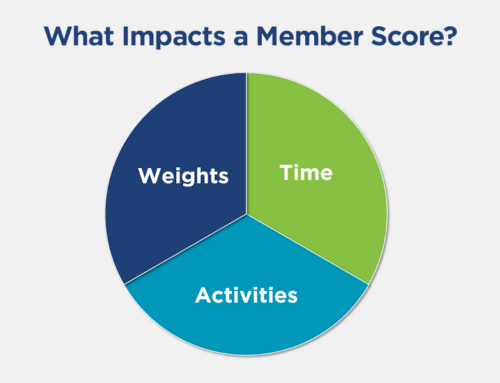Over the last decade, associations have embraced digital channels for member engagement and other business transactions. Looking ahead to the next decade, we predict that more associations will make it a priority to develop a data culture internally at their organizations.
What does it mean to have a data culture?
An article from Microsoft’s CEO, Satya Nadella, explains that “At Microsoft, we’re working hard to make data visualization, BI, and statistical analysis part of our normal, everyday work. Drawing insights from data and making decisions based on these insights is a key part of our culture.”
It really comes down to empowering your staff with the ability to access complete, accurate, and timely data that leads to meaningful insights.
Creating a data culture certainly has complexities and requires careful planning, leadership, and strategic thinking. In 2020, our team hosted a webinar on some of the steps your association can take towards improving your data and analytics capabilities. If you have an hour to spare, I encourage you to watch the video from Association Analytics and our partner, Altai Systems:
If you don’t have time to watch the full video, we put together a high-level summary in this blog post to recap our top 10 data and analytics trends you should care about in 2020 and beyond. If you want to start improving on your organization’s data culture, check out this list for actionable ways your association can get started today:
#10 Analytics Strategy & Roadmap
When creating a data culture, it’s most effective when executive leadership teams are the driving force of change. A useful first exercise for many organizations is to go through the process of developing an analytics strategy and roadmap.
In this type of exercise, associations are really focused on building a business case for analytics. You will want to assess the current state of data and analytics in your organization, documenting the desired vision and outcomes for the project, identifying key stakeholders involved, and synthesizing all of this information into a final presentation or document.
Typically, this type of exercise has four focus areas and should give tangible recommendations for each:
- People: We need to hire an analyst
- Process: We need to refine our data governance processes
- Technology: We need a self-service business intelligence solution
- Data: We need to make improvements to data privacy and security
These are sample recommendations and will vary based on your data analytics maturity and goals. The objective at this stage is to build consensus internally and develop measurable next steps for improving your data culture over time.
#9 Data Governance
Over the last several years, a trend has been for organizations to focus on data governance initiatives. Data governance is a cross-functional management activity that, at its core, recognizes data as an enterprise asset which is used to achieve strategic and operational goals.
Governance is mission-critical in achieving an association’s desired data management goals, but initializing and maintaining a successful data governance program can be challenging for many associations.
Having a data governance program will position your association for success. Associations looking to develop a data governance program will need to form a team, define the governance process, identify priorities, create a policy, and then develop a sustainable plan.
To learn more about identifying the issues and risks that threaten your data, a great resource for further reading can be found in this guide to data governance for associations.
#8 Data Visualization
Another fundamental aspect of any data analytics program is to leverage data visualizations to analyze trends and find insights using large sets of data.
A popular quote from Ben Shneiderman is that “visualization gives you answers to questions you didn’t know you had.” The idea here is that we often take things for granted, but data can be useful to validate or disprove our assumptions.
One such example is from an Association that had always set a goal to increase the number of attendees for their live seminar programs. The assumption was that an increase in attendees would result in more revenue, and thus more profits for the business.
However, the data told them a different story and it turned out that they could actually increase their overall profit by reducing the number of live seminars by 25%. Although they saw a slight decrease in the number of attendees, they also saw an increase of $400k in profits.
Challenging the status quo can sometimes be intimidating and it’s much easier to look at what was done in the past and repeat. But if you have the data to support business decisions, you can be confident when changing strategies and ultimately find opportunities to optimize results.
#7 Reporting vs. Analytics
Another topic we covered is the difference between reporting and analytics. It’s easy to think of these as synonymous, but an article from Hubspot explains that:
“Unlike reporting, which focuses on compiling data you have been collecting, analytics focuses on exploring and interpreting data or reports in order to glean valuable insight into why certain trends happened the way they did.”
It’s important to think about this as you look at reports. Many technology systems today will have some form of visualization, but are you able to derive meaningful insights from the data? A key element of analytics is that you can use the data to impact your strategies and decisions in a meaningful way.
While reports provide relevant data, it’s important to remember that they are often just limited to data that lives in one system. The next section covers why building a central data repository is such an important step in the path towards analytics.
#6 Central Data Repository
Of course, a central data repository is a key step in the journey for analytics. By leveraging a modern business intelligence (BI) solution, associations are taking the data that is scattered across multiple systems and reports and compiling it in one centralized location.
Key components of a modern BI solution include:
- A single view of all your organization’s data
- Self-service analytics that empower business users to slice and dice data
- Meaningful insights that can be gained in near real-time
- A system that supports data governance and privacy initiatives
Having a central data repository is a basic step toward becoming an organization that embraces a data culture. Investing in this type of solution can also have a significant impact on your association’s long-term and short-term profitability, with research from McKinsey showing that data-driven companies are 23x more likely to acquire customers, 6.5x more likely to retain customers, and almost 19x more profitable than companies who are not as focused on data and analytics.
#5 Fast Data
The first five topics we covered on this list are foundational steps in a data analytics journey, whereas the next five topics will begin to cover more advanced topics to consider. The first topic we want to cover is fast data, which the American Society of Association Executives (ASAE) covers in a resource called the ForesightWorks Drivers of Change: Data and Technology.
In this resource, ASAE explains that:
” An increasingly important form of data analytics is “fast data,” which emphasizes real-time decision-making based on the idea that the greatest value from data comes from immediate application.”
One such example of this in action would be using data analytics to monitor trends from Social Media or online community forums, and then using those insights in real-time to change your member engagement strategy.
The idea is that you can offer more relevant content or programs to members by understanding what matters to them now. This requires associations to be more agile in their planning and execution processes, but it can be a powerful way to tap into the real-time sentiment from different segments of your membership.
#4 Predictive Analytics
Predictive analytics is the next phase for many associations that want to do more with their data. By leveraging predictive models, associations can see what is likely to happen in the future and use that information to adjust their strategies.
One common use case is to deploy predictive analytics for events. Using a predictive model, associations can group members into deciles that range from least likely to most likely to attend an event.
This information can be incredibly powerful for marketing teams as they plan campaigns. The idea is that you segment out the lists of people that are least likely to attend and you don’t waste marketing dollars on a very unlikely opportunity to convert them into paying registrants.
Likewise, there is a segment of attendees that always attend your events like clockwork. There’s no sense in devoting your precious advertising dollars on this group, since they are planning to attend regardless of your ad campaign reaching them.
You can now put all your advertising dollars toward the members that have the best chance of converting into paid registrants. Associations that use predictive analytics in this way will limit advertising waste and increase their marketing ROI with better conversion rates.
#3 Engagement Scoring
Another important topic that is top of mind for today’s data-driven leaders is to invest in better analytics systems to understand the impact of engaged members. Diving deeper into engagement metrics allows associations to understand which programs are successful and to see the true ROI.
That’s where Engagement scoring comes in – it’s an effective way to evaluate your members by assigning points based on meaningful interactions. You will have an objective way to compare highly engaged members against less engaged members to see how engagement relates to financial outcomes.
If you’re looking for specific best practices on how to create an engagement score, a great resource you can access is our guide: Getting Started with Member Engagement Scoring.
#2 Unstructured Data
Research from Gartner suggests that 80% of business data can be classified as unstructured, but most businesses are only focused on analysis of structured data.
That’s why many associations consider unstructured data to be a treasure trove of useful information and why they are prioritizing solutions that help them analyze it.
If you aren’t familiar with unstructured data, it includes primarily text-based information (things like social media discussions or member feedback surveys) that offers valuable insight into member sentiments. On the other hand, structured data refers to the transactional data that can be captured in rows/columns (traditionally what we think of when we talk about data analysis).
Capitalizing on unstructured data through advanced analytics is an opportunity to turn what members are saying into real insights that can help you improve products and services. Having these insights allows you to identify new opportunities to improve member satisfaction and experience, which can turn into significant cost savings and an overall improvement in retention.
#1 Artificial Intelligence (AI)
The last topic on our list and our prediction for this year is that more associations will begin to adopt products that leverage artificial intelligence.
One practical application of the technology is to use AI to build a recommendation engine. A recommendation engine seeks to predict the “rating” or “preference” a user would give to an item. You’ve seen this with companies like Spotify, Amazon, and Netflix that are recommending which song you might like, which product to buy next, and what movie you might like to watch.
This same technology is being developed for the association market to make recommendations in three categories:
- Products: What might you want to purchase?
- Content: What might you want to read?
- People: Who might you want to collaborate with?
A study from Accenture found that 75% of customers are more likely to make a purchase from a company that knows their name and purchase history and recommends products based on their preferences. Brands on the consumer side are taking advantage of this opportunity, and now it’s time that associations do the same and deliver more personalized recommendations to their members.
Setting your goals for analytics
It’s good to remember that data analytics maturity happens in small increments over time. We hope this list serves as a conversation starter in your organization and helps you think about building a data culture. What measurable goals are you going to set for improving data and processes? Which technologies are you planning to research? And how do you plan on investing in the people (staff and partners) that will help you achieve these goals?



